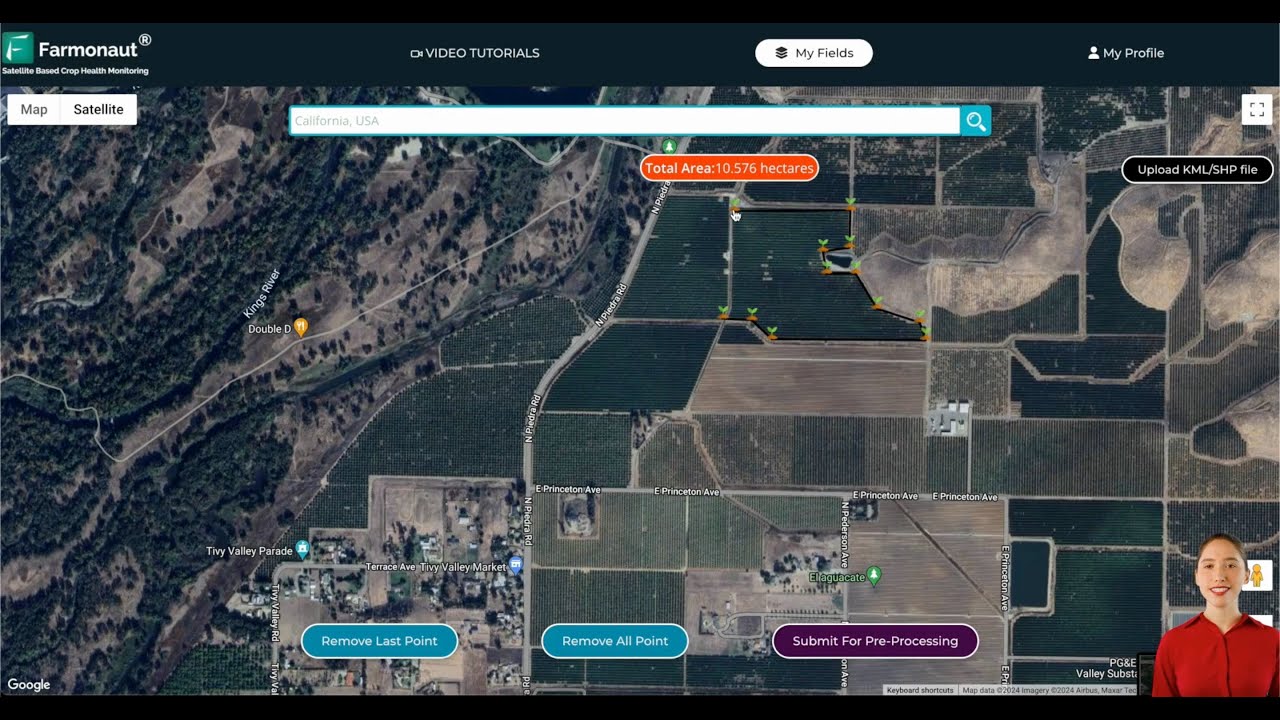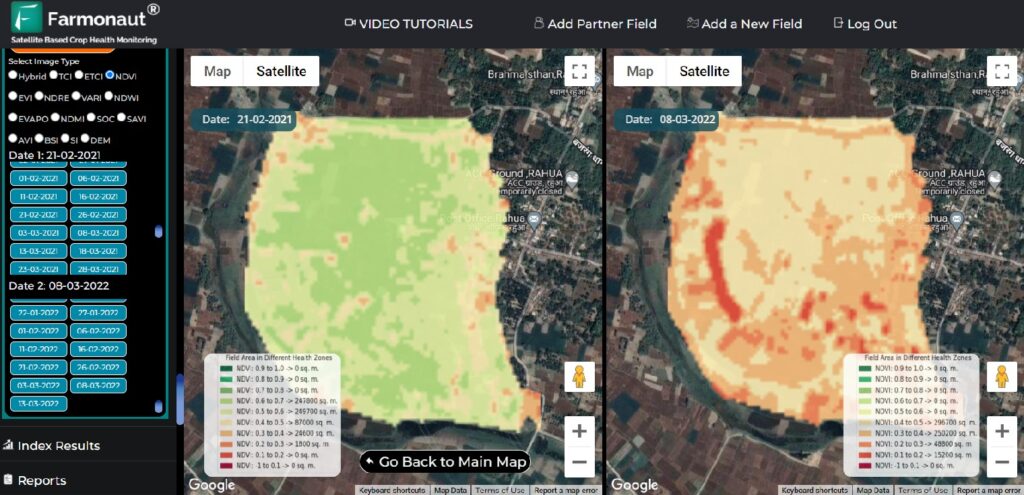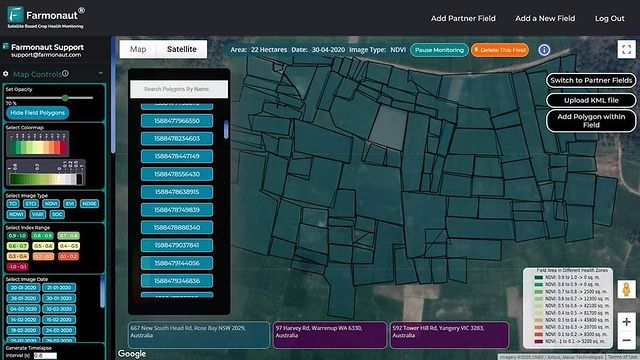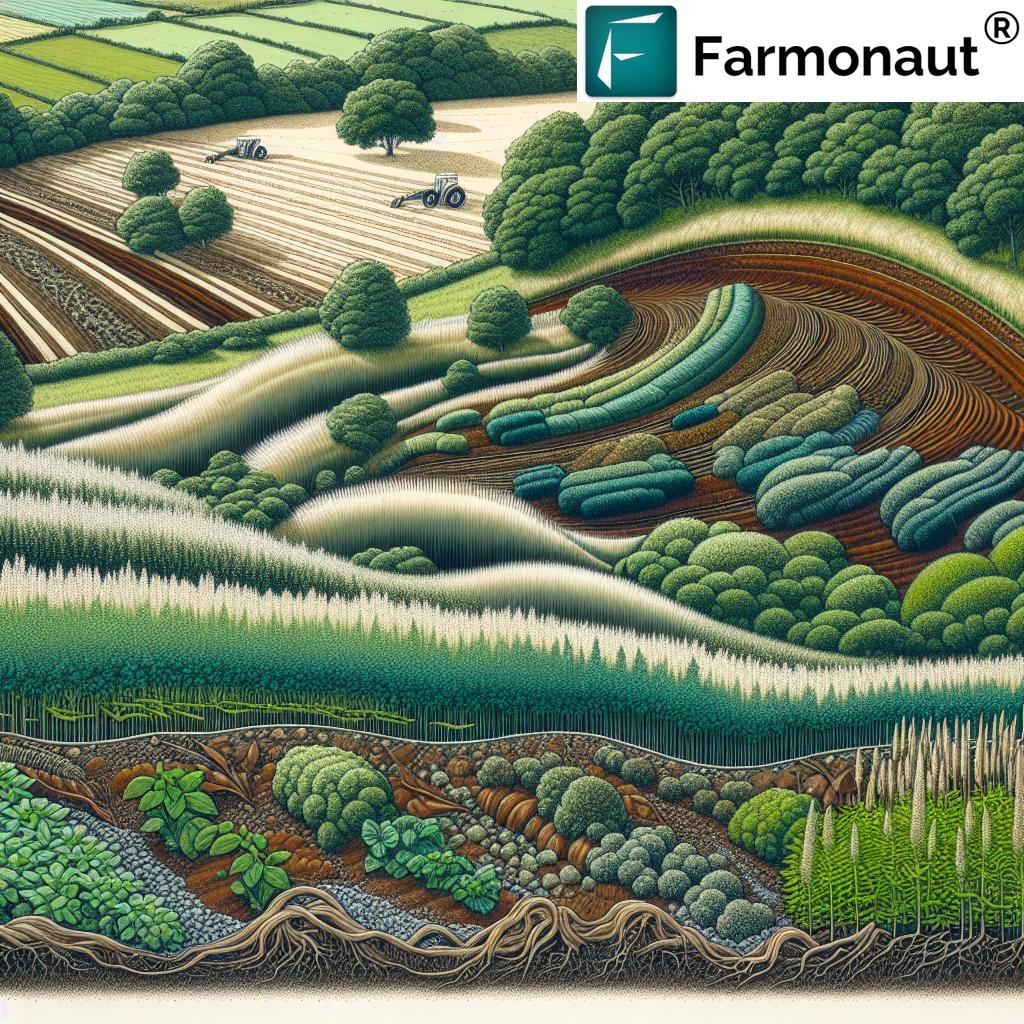Agritech Marketing: 10 Top Strategies for Success
“Over 70% of agritech firms use digital platforms to enhance marketing reach and community engagement.”
- Introduction
- 1. Develop a Robust Online Presence
- 2. Leverage Social Media Platforms
- 3. Implement Email Marketing Campaigns
- 4. Utilize Video Marketing
- 5. Engage in Content Marketing
- 6. Collaborate with Agricultural Influencers and Thought Leaders
- 7. Offer Free Trials or Demonstrations
- 8. Implement Referral Programs
- 9. Participate in Agricultural Innovation Programs
- 10. Utilize Data Analytics and Feedback
- Strategy Comparison Table
- Key Digital Platforms and Tools
- FAQ Section
- Conclusion
Introduction: The Rise of Agritech Marketing Strategies
Agricultural technology, also known as agritech, is revolutionizing farming and forestry sectors globally. Through innovative agricultural technology solutions like satellite imagery, AI advisory, blockchain-based traceability, and resource management tools, the agritech industry is driving sustainability, productivity, and profitability for farmers, agribusinesses, and stakeholders.
As the competitive landscape grows, adopting strategic agritech marketing strategies becomes essential. These strategies bridge the gap between cutting-edge technology and the farming community, leveraging digital agriculture platforms to deliver value, foster engagement, and accelerate agricultural digital transformation.
In this comprehensive guide, we delve into the 10 top strategies for agritech marketing success, providing actionable steps, the latest industry trends, and practical examples to help businesses and organizations thrive in the fast-evolving world of modern agriculture.
1. Develop a Robust Online Presence for Agritech Businesses
The foundation of every successful agritech marketing strategy is a strong digital presence. In today’s landscape, farmers, agribusinesses, and stakeholders turn to the internet as their primary source for information, product research, and industry updates.
Key Elements of a Robust Agritech Website
- Mobile-Responsive Design: Ensure seamless viewing across devices so that farmers and agribusinesses can access your site wherever they are—on the field or at home.
- Clear Navigation & Fast Loading: Streamline access to important pages such as solutions, services, crop monitoring technology, pricing, and contact information.
- SEO Optimization: Incorporate search engine optimization techniques to improve visibility in search results. Key agritech keywords in meta titles, descriptions, and alt tags boost discoverability for agricultural technology solutions.
- Content Hubs & Blogs: Develop comprehensive guides, agritech industry trends, and best practices for innovative farming tools. Blogs provide valuable, expert insights and continuously engage both new and existing users.
For example, we at Farmonaut offer an intuitive, mobile-friendly app alongside a robust browser-based platform (access Farmonaut App here) and detailed API documentation (API Developer Docs), ensuring farmers, agribusinesses, and developers can integrate innovative farming tools into their daily operations with ease.
Prioritizing your digital footprint with a strategic, SEO-optimized website, linked apps, and accessible information is the cornerstone for building trust, authority, and engagement in digital agriculture platforms.
2. Leverage Social Media Platforms for Community Building
Social media has become an indispensable channel for the agricultural industry. Platforms such as Facebook, Instagram, LinkedIn, and YouTube enable agritech firms to engage directly with diverse segments of the farming community.
Best Practices for Social Media in Agritech Marketing
- Share Farm and Technology Updates: Post regular farm updates, product launches, and technological breakthroughs to keep the audience informed.
- Educational Content and Sessions: Host Q&A sessions, live farm tours, webinars, and “how-to” videos to share knowledge about innovative farming tools and sustainable farming practices.
- Community Engagement: Respond to comments, create interactive polls, and encourage user-generated content—such as images of farmers using your solutions or testimonials from the field.
- Hashtags and Campaigns: Leverage trending agritech industry trends hashtags and participate in sector-wide awareness days (e.g., World Soil Day, National Agriculture Day) to raise visibility.
By nurturing an active community through these platforms, agritech companies can accelerate knowledge transfer, boost brand recall, and create a powerful feedback loop with end-users.
3. Implement Email Marketing Campaigns for Personalization and Retention
Email marketing remains one of the most effective tools in outreach, nurturing, and conversion for agritech business. It allows precise segmentation based on user interests—whether that’s crop monitoring technology, weather advisory services, or blockchain-based traceability solutions.
- Segmentation: Classify your mailing lists by farm size, crop type, region, or previous solution usage to deliver highly relevant messages.
- Educational Newsletters: Send regular updates with blogs, sustainability tips, product news, and case studies to keep the audience informed about the latest in agricultural digital transformation.
- Exclusive Offers & Early Access: Reward loyal users and entice new subscribers with early access to new features, free trials, or limited-time deals on popular solutions.
Our team at Farmonaut employs automated, segmented email campaigns to keep farmers and agribusinesses closely connected with the latest upgrades—such as carbon footprinting tools—and to share learning resources for precision farming.
4. Utilize Video Marketing to Inspire Trust and Drive Adoption
Video content has transformed digital marketing for the agricultural sector. From demonstrating new technology to sharing real-life success stories, videos can simplify complex topics and connect emotionally with diverse audiences.
- Tutorials: Create step-by-step guides for platform onboarding, crop monitoring, and using new digital agriculture platforms.
- Customer Testimonials: Showcase how real farmers or agribusinesses improved productivity through agritech solutions—emphasizing sustainability, reduced wastage, and increased yields.
- Product Demonstrations: Visually explain the practical value of your offerings, such as blockchain-based traceability for agricultural produce.
These engaging formats raise brand credibility, shorten the learning curve for new users, and directly influence purchase decisions in the digital era. For enhanced impact, embed videos on your website, in email campaigns, and on social channels like Facebook Watch and YouTube.
5. Engage in Content Marketing to Build Authority
Content marketing is the backbone of digital visibility and industry leadership. Expert-generated content not only educates and engages but also helps achieve higher search engine rankings (SEO) for competitive agritech keywords.
- Expert Blogs & Guides: Develop deep-dive articles discussing agritech industry trends, sustainable farming practices, crop monitoring technology, and digital agriculture platforms.
- Resource Centers: Offer downloadable guides, ROI calculators, and knowledge hubs to position your firm as a solution provider for common agricultural pain points.
- Behind-the-Scenes Content: Humanize your brand with stories from R&D, product development, and real-world farming operations. Include engineer, agronomist, or customer perspectives to enhance relatability.
For example, at Farmonaut, we routinely publish updates about satellite-based monitoring, AI-driven advisory, and sustainability-focused features—making us a trusted voice in the global agritech community.
6. Collaborate with Agricultural Influencers and Thought Leaders
The agricultural world is vibrant with community leaders and influential voices. Partnering with respected influencers amplifies your solutions and increases brand trust across local and international farming communities.
How to Leverage Influencer Marketing
- Guest Blog Posts & Expert Panels: Invite agronomists, agricultural technologists, or experienced farmers to share their insight on your blog or digital platforms.
- Product Reviews: Trusted influencers can demonstrate the efficacy of your digital tools, such as crop monitoring technology or API integrations, to their followers.
- Co-hosted Events or Webinars: Run live educational sessions about industry trends and sustainable practices, fostering a collaborative learning environment online.
This approach builds community credibility, signals thought leadership, and brings authentic testimonials to a wide audience, especially when introducing innovative technology.
7. Offer Free Trials or Demonstrations to Accelerate Adoption
For many farmers and agribusinesses, embracing new agricultural technology solutions represents a significant operational change. By providing free trials or hands-on demonstrations, companies address “fear of the unknown” and make the decision-making process easier.
- No-Risk Evaluation: Allow potential customers to test the platform (e.g., Farmonaut App) and assess how tools like real-time crop health monitoring work for their farm or business operations.
- Live and On-Demand Webinars: Host virtual sessions walking users through major features such as the Agro-Admin App for large-scale farm management or resource optimization tools.
- Customized Demonstrations: Offer personalized walkthroughs addressing the particular needs of each segment—smallholder farmers, agribusinesses, and government agencies alike.
Free trials remove adoption barriers, encourage experimentation, and inspire confidence by letting users witness real-world, positive results firsthand.
8. Implement Referral Programs for Virality and Word-of-Mouth
In the tight-knit world of agriculture, referral programs are a powerful method for growing your user base organically. Farmers and agribusinesses trust recommendations from their peers, making word-of-mouth a persuasive channel.
- Incentivize Referrals: Reward existing customers with service credits, discounts, or advanced feature access for referring others to your platform (such as Farmonaut’s crop monitoring solutions).
- Streamlined Process: Design easy-to-use referral interfaces with clear tracking and transparent rewards to encourage participation.
- Leverage Trusted Community Members: Recognize and publicly thank top referrers within the farming community to inspire further engagement.
With clear communication and strategic rewards, referral programs can amplify your reach and credibility across agriculture sectors, boosting both adoption and community loyalty.
9. Participate in Agricultural Innovation Programs and Ecosystems
The heart of agricultural digital transformation lies in continuous innovation. Engaging with leading-edge programs and attending major agritech conferences keeps your brand at the forefront of sector advancements and opens new avenues for growth.
- Join Innovation Hubs: Participate in agritech accelerators and digital agriculture forums to exchange knowledge on the latest industry trends and pilot emerging technologies.
- Share at Conferences: Present your research, innovative farming tools, and sustainability initiatives at events focused on crop monitoring technology, smart farming, and resource management.
- Collaborate with Research Institutions: Leverage opportunities for cross-learning and joint development of tools with universities and agricultural think tanks.
Being visibly active in such communities enhances trust and drives adoption among proactive farmers and agribusinesses looking to modernize their operations.
10. Utilize Data Analytics and Feedback to Optimize Your Strategy
Effective agritech marketing strategies thrive on data-driven decision-making. Agriculture analytics tools and feedback loops provide insights into what content, campaigns, or features are working and highlight opportunities for growth.
- Measure & Monitor: Use analytics dashboards to track website traffic, email engagement, platform adoption rates, and customer retention.
- Customer Feedback: Regularly solicit reviews and suggestions—through in-platform surveys, focus groups, or phone/email outreach—to iterate and perfect your service offerings.
- Business Intelligence Integrations: Combine analytics with CRM and sales data for a holistic view, linking marketing activities to business outcomes such as increased crop yield, resource savings, or reduced carbon footprints.
At Farmonaut, we utilize platform-level analytics to continually fine-tune our digital marketing efforts and product development pipelines, ensuring the highest level of customer satisfaction and technology adoption.
Strategy Comparison Table: Agritech Marketing Approaches
| Strategy Name | Estimated Productivity Boost (%) | Example Digital Tool/Platform | Estimated Sustainability Impact | Community Engagement Potential |
|---|---|---|---|---|
| Develop a Robust Online Presence | 10-20% | Mobile-responsive website, Farmonaut App | High | Medium |
| Leverage Social Media Platforms | 8-15% | Facebook, Instagram, LinkedIn, YouTube | Medium | High |
| Implement Email Marketing Campaigns | 10-18% | Mailchimp, Constant Contact | Low | Medium |
| Utilize Video Marketing | 12-25% | YouTube, Vimeo | Medium | High |
| Engage in Content Marketing | 10-20% | Blogs, E-books | High | Medium |
| Collaborate with Influencers | 8-14% | Influencer networks, Agri YouTubers | Medium | High |
| Offer Free Trials or Demonstrations | 15-22% | Farmonaut App demo, onboarding flows | Medium | Medium |
| Implement Referral Programs | 7-14% | Referral widgets, Invite friend APIs | Low | High |
| Participate in Innovation Programs | 12-28% | Agritech conferences, Accelerator platforms | High | Medium |
| Utilize Data Analytics and Feedback | 10-20% | Google Analytics, Farmonaut’s in-app analytics | High | Medium |
Key Digital Agriculture Platforms and Tools
Modern agritech success is fundamentally tied to the intelligent use of digital platforms and data-driven technologies. Here’s a snapshot of must-have tools with unique use cases adapted for farmers, agribusinesses, and agricultural stakeholders:
- Farmonaut Carbon Footprinting: This module enables environmental impact monitoring by providing real-time data on greenhouse gas emissions. It’s essential for agribusinesses committed to sustainable farming practices and regulatory compliance.
- Blockchain-Based Traceability: Enhance consumer trust and supply chain transparency. This solution offers a tamper-proof record for every stage from farm to market—crucial for organic produce, contract farming, and food logistics.
- Fleet and Resource Management System: Optimize logistics and reduce operational costs by tracking fleets and equipment. Suitable for cooperatives, plantation management, and agricultural haulage companies.
- Crop Loan and Insurance Verification: Banks and insurers can use satellite data for remote field verification, reducing fraudulent claims and simplifying the crop insurance process.
- Large-Scale Farm Management (Agro-Admin App): This web-based solution is designed for estate managers and agribusinesses to monitor vast landholdings, coordinate teams, and manage complex operations efficiently.
All of these solutions contribute toward the ongoing agricultural digital transformation and empower users to implement precision agriculture affordably and efficiently.
FAQ Section: Agritech Marketing Strategies
-
What is agritech marketing?
Agritech marketing is the practice of promoting digital agriculture platforms, innovative farming tools, and related technology solutions to farmers, agribusinesses, and stakeholders through both online and offline channels, focusing on improving productivity, sustainability, and community engagement. -
Why are digital platforms critical for agritech success?
Digital platforms allow rapid, global outreach; facilitate real-time crop monitoring, advisory, and analytics; and support the dissemination of educational content, thus building stronger connections with the farming community. -
Which agritech marketing strategies deliver the fastest ROI?
Strategies like free trials, referral programs, and video tutorials tend to yield immediate improvements in user engagement and adoption, while SEO and content marketing build sustained, long-term visibility. -
How can farmers benefit from adopting modern agritech platforms?
Farmers gain access to real-time crop health monitoring, AI-based advisory, traceability, resource management, and weather forecasting—helping them make data-driven decisions that optimize yields and reduce environmental impact. -
Are Farmonaut solutions accessible to all types of farms?
Yes. We designed the Farmonaut ecosystem to be scalable and affordable, suitable for smallholder farmers, large estates, and agribusinesses; available as an app, browser solution, and API. -
Can businesses integrate Farmonaut’s data into their proprietary systems?
Absolutely. We provide robust APIs and developer documentation to enable seamless integration of satellite and weather data into external agritech and analytics tools. -
What makes Farmonaut unique in the agritech industry?
Our platform uniquely blends multispectral satellite data, AI-driven advisory, blockchain-based traceability, and advanced resource management, all at an affordable price—making precision agriculture accessible on a global scale.
Farmonaut Plans: Flexible Subscriptions to Get You Started
Conclusion: Accelerate Growth with Innovative Agritech Marketing Strategies
As agricultural digital transformation accelerates, the future of farming rests squarely upon the smart integration of technology, digital platforms, and community-centric marketing. Agritech marketing strategies—rooted in robust online presence, social media engagement, data analytics, video storytelling, influencer partnerships, and value-driven content—are revolutionizing the way farmers and agribusinesses learn, connect, and prosper.
We at Farmonaut remain committed to making precision agriculture accessible, sustainable, and profitable for everyone across the agricultural value chain. Through satellite-driven crop monitoring technology, AI-powered advisory, blockchain traceability, and seamless API integrations, our digital agriculture platform empowers the modern farming community to achieve more—with less.
Deploying the ten top agritech marketing strategies outlined above is not just a blueprint for new customer acquisition—it’s a catalyst for long-term growth, innovation, and leadership in the evolving world of sustainable, profitable agriculture.
Unlock the future of digital agriculture with Farmonaut—empowering sustainable, data-driven farming worldwide.



















